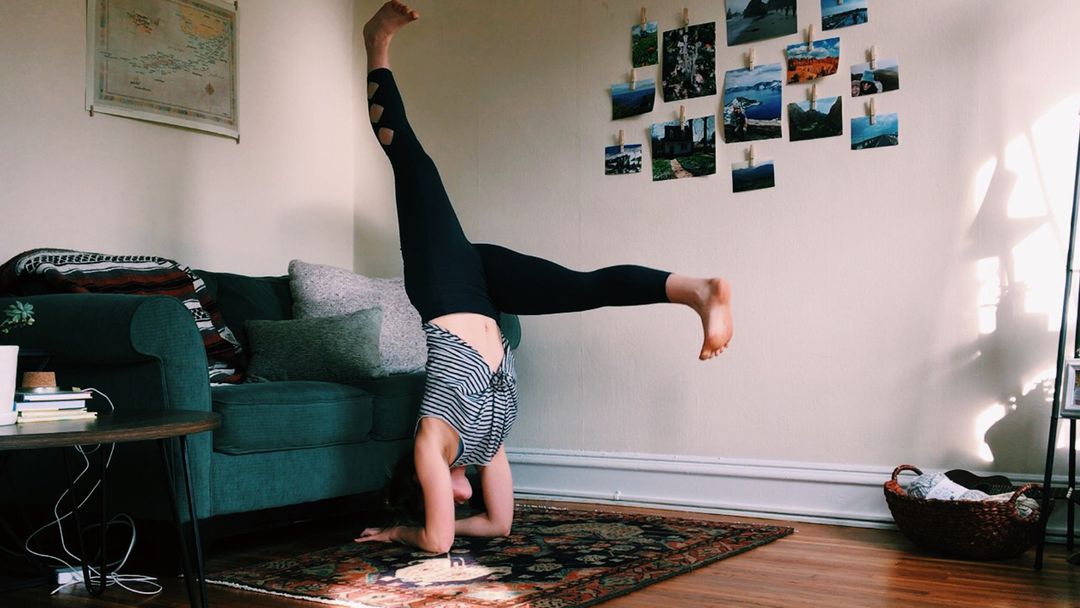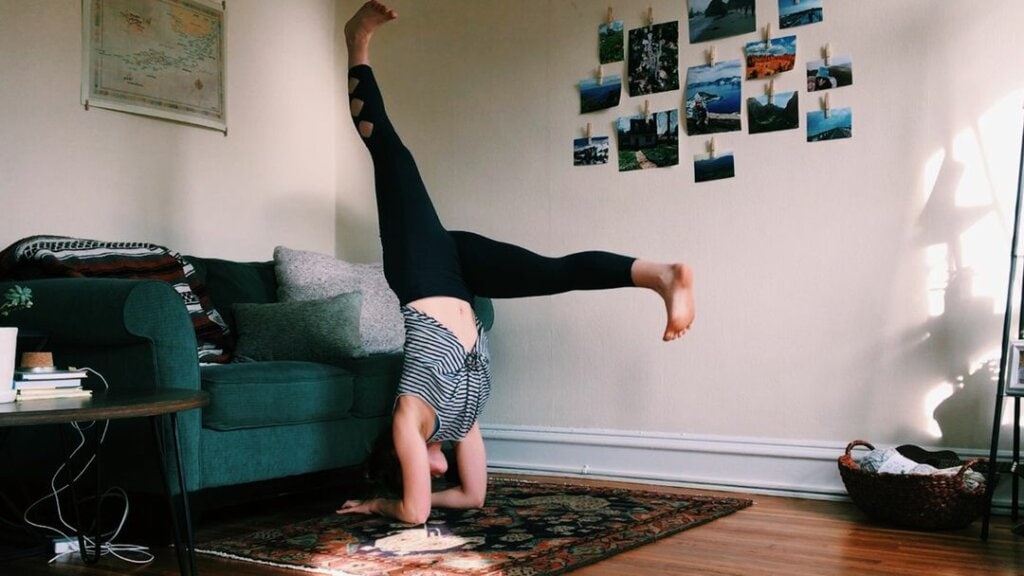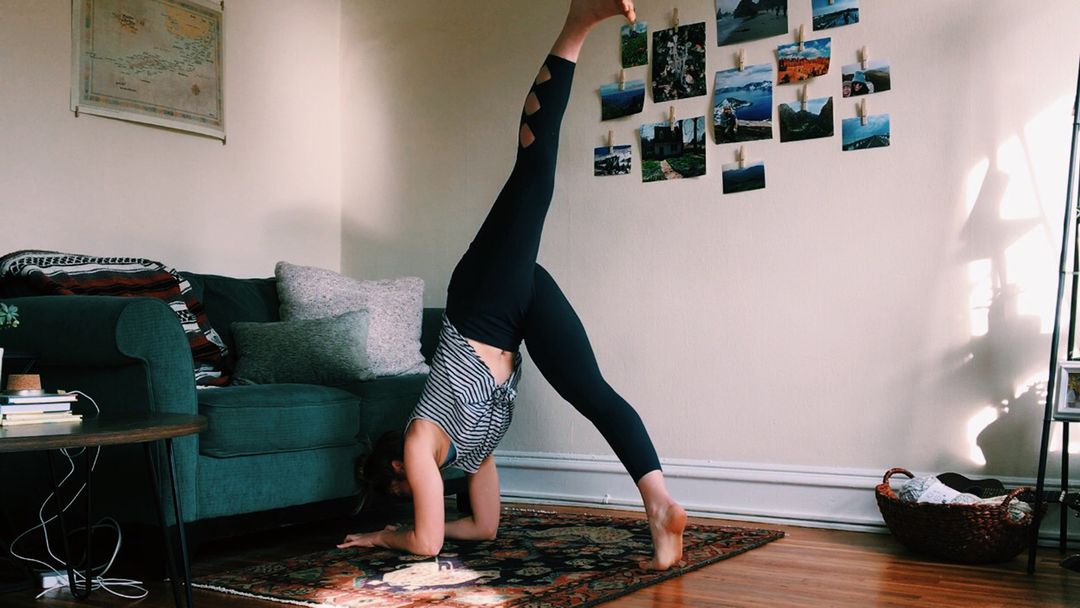It’s a rational fear, the fear of falling: scaling the edge of a cliff, bouldering a wall free solo. That stomach dropping feeling is normal as a human with a functioning amygdala (the part of the brain that processes fear). So you’re not alone in yoga if you get scared when you have two hands on the ground and no feet. When we practice arm balances and inversions, our neck feels (and is) in a vulnerable spot. It’s an ingrained instinct to want to protect an exposed neck and back for fear of breaking or hurting something.
Meanwhile, arm balances and inversions are SO FUN. And the truth is, you can practice arm balances and inversions without falling at all. In a perfect yoga world, you would fall back down to where you started. Most of us are pretty comfortable with this motion of exiting the pose the same way we came in. But we know that’s not always what happens on the mat. When your arm balance or inversion practice is pushing you outside of your comfort zone and you’re losing balance, there are many ways to ground yourself to exit the pose without flipping into a backbend. So here are some tips and techniques for how to fall in yoga without fear…
See-saw legs
Begin practicing with your legs spread like a see-saw or an “L” shape, so that the top leg is reaching up towards the sky while the bottom leg stays close to the ground. Practicing with the bottom leg close to the ground will help you to feel a bit safer because the floor will be close. It takes just a small pushing motion off the back leg (but TONS of core strength) to get your feet off the ground. Don’t kick your legs up, instead keep the bottom leg close to the ground, and then you can safely come back down.
Cartwheel out
When feeling yourself falling in one direction, purposely cartwheel in that direction. For example, if you are falling to the right, step your left hand or forearm out to the left to push yourself in the direction you are starting to fall, and cartwheel out of the pose. This is a more purposeful exit, as opposed to kicking and flailing legs.
Practice with a partner
With your L shape legs, reach one leg up towards the sky, and step the other foot into your friends hands. Your partner can help to guide that foot up to meet the other leg eventually. Even if your friend is not spotting you, having someone close by may make you feel safer.
Purposely fall onto something
Practicing the motion of going over your head will decrease your fear of it. Although we want to avoid this from happening in the first place, the ground is not as far away as it may feel. Practice by allowing one foot to come to a raised platform in front of you (a couch/sofa/pads). Notice I say “allowing”… we’re still not kicking over and losing control here. Over time, start to make that platform shorter and shorter.
You don’t have to fall in order to learn inversions!! Don’t force it. The harder you try, kick, struggle, the more likely you are to fall. Find the balance between ease and challenging yourself. Remember, it’s a yoga practice, not a yoga perfect. It may take years to reach your inversion goals, so let yourself surrender to where you are at in the process and enjoy the journey.





